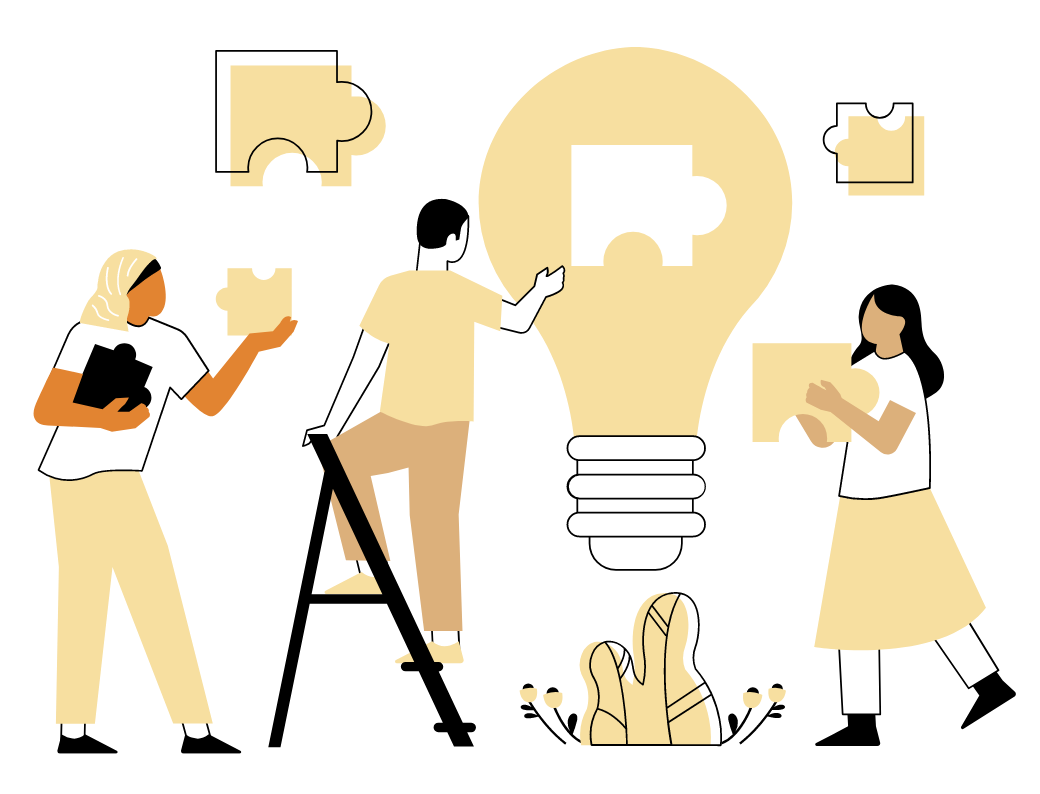CUSTOM ELEARNING
We design custom eLearning that your audience won’t forget and that your budget will love

To get started with your custom eLearning project
What kind of custom eLearning can we design?
Pretty much any! In collaboration with subject matter experts within your organisation, we design tailor made eLearning that aligns with your budget, organisational strategy, and goals. Our experts will wow your audience with a beautiful and fascinating eLearning module. Some examples include:
- Converting face to face training to eLearning
- Induction Training
- Leadership Training
- Essential skills (e.g Time management)
- Compliance Training
- Systems Training
- Technical Training
- Sales and Customer Service Training

Our design strategy will bring the physical world into the eLearning to immerse your team on a deep learning journey, while maximising their attention, engagement and learner retention with:
- State-of-the-art authoring technology
- Game-based learning (make the driest of topics fun to learn about)
- Engaging videos
- Brilliant animations and sounds
- High-powered graphics
- Characters, buttons and objects that learners interact with
WHY ELEARNING
Can your organisation afford not to join the trend?
Interactivity
Learners interact with simulations, quizzes, games, graphics, animations and videos, and flip, drag and drop items around the screen while learning. Instead of reading pages of text or sitting through a presentation, learners can be engaged in the material, which increases retention and engagement.
eLearning is scalable
You can roll it out to as many learners as you need, and it is a one-time investment that does not require repetition by a facilitator.
On Demand
Learners can access content anywhere, anytime and on demand. Today’s learners are engaged in short, mobile, self-paced, and customised content available at their fingertips as many times as they need without having to worry about attending a scheduled zoom or classroom session.
Full Quality Control
In face-to-face or zoom sessions, every instructor has their own method of delivering. Each varies in approach and style and is susceptible to mistakes. You can eliminate these issues with e-learning. Online learning provides consistent and standarised learning every time.
Save time & money
Factoring in loss of productivity, paying for an facilitator, travel time, time away from work to attend sessions and the cost of training materials like workbooks, it is easy to see how eLearning is more cost-effective compared to traditional training methods.
Learner retention and engagement
The many advantages of eLearning can be argued in a number of ways, but the main advantages simply boil down to two components: retention and engagement. Learners who are engaged and excited about the course material, who actually want to experience the concepts through gamification and interaction are more likely to retain the learning objectives
Sensory Engagment
eLearning engages a learner’s eyes, ears, and hands during a course, and enhances what could have been a lackluster experience. What’s more, simulations and skills uptake checks give users another chance to truly experience the training in a safe space before applying new skills on the job.
Continuous feedback
eLearning gives learners permission to explore, test and yes, even fail as part of the learning process. Continuous, in-the-moment feedback helps learners’ course-correct and become more proficient in the safest way possible, keeping the learning path moving forward in a positive way.

Interactivity
Learners interact with simulations, quizzes, games, graphics, animations and videos, and flip, drag and drop items around the screen while learning. Instead of reading pages of text or sitting through a presentation, learners can be engaged in the material, which increases retention and engagement.
Full Quality Control
In face-to-face or zoom sessions, every instructor has their own method of delivering. Each varies in approach and style and is susceptible to mistakes. You can eliminate these issues with e-learning. Online learning provides consistent and standarised learning every time.
Sensory Engagment
eLearning engages a learner’s eyes, ears, and hands during a course, and enhances what could have been a lackluster experience. What’s more, simulations and skills uptake checks give users another chance to truly experience the training in a safe space before applying new skills on the job.
eLearning is scalable
You can roll it out to as many learners as you need, and it is a one-time investment that does not require repetition by a facilitator.
Save time & money
Factoring in loss of productivity, paying for an facilitator, travel time, time away from work to attend sessions and the cost of training materials like workbooks, it is easy to see how eLearning is more cost-effective compared to traditional training methods.
Continuous feedback
eLearning gives learners permission to explore, test and yes, even fail as part of the learning process. Continuous, in-the-moment feedback helps learners’ course-correct and become more proficient in the safest way possible, keeping the learning path moving forward in a positive way.
On Demand
Learners can access content anywhere, anytime and on demand. Today’s learners are engaged in short, mobile, self-paced, and customised content available at their fingertips as many times as they need without having to worry about attending a scheduled zoom or classroom session.
Learner retention and engagement
The many advantages of eLearning can be argued in a number of ways, but the main advantages simply boil down to two components: retention and engagement. Learners who are engaged and excited about the course material, who actually want to experience the concepts through gamification and interaction are more likely to retain the learning objectives

DESIGN ELEMENTS
A robust production toolkit…
eLearning modules vary in cost, development time and level of complexity.
The cost of an eLearning course is influenced by many factors including:
-
Amount and quality of source material
-
Level of interactivity
-
Length of the module
-
Number of edits
-
Design concepts
-
Graphics
-
Videos and animations
- Interactive elements
Adult learning theory
Instructional designers apply adult learning theories and design principles to bring courses to life where learners feel immersed and captivated with a range of thought-provoking, application-based learning activities.
High power graphics
Are used to move and interact with the learner while engaging their sense.
Brilliant animation & sounds
To deliver the concepts of dry topics in a fun and engaging way to maximise learner focus and engagement.
Next level authoring technology
State-of-the-art authoring technology to make eLearning both beautiful and fascinating for learners while they meet their learning objectives.
LEVELS OF DIGITAL INTERACTIVITY
A narrative approach
Basic
Is essentially a ‘telling’ approach. The skill lies in the storytelling and the conciseness of the content explaining the concepts and facts. Using Self-assessment questions to evoke interest and check understanding.

Very nice
Procedural eLearning
Intermediate
Often used in systems training, requires demonstrations, graduated tasks and practice opportunities. The skill lies in breaking down the procedure into ‘how to’ bite-size logical steps. It usually requires animation or video to demonstrate the process.

So much fun
Experimental learning
Advanced
Is about taking the learner on a journey of discovery as decisions are made. Useful for developing judgement and changing behaviour, gamification falls into this category. The skill lies in molding the content from right/wrong to shades of grey. Also, the multimedia programming (animation) can be extensive.

Next level learning
BUILDING THE FUTURE
Our approach to immersive learning experiences…

Evaluation
Evaluate if the learning is effective, make changes and cycle back to the Analysis phase
Implementation
Launch your learning product to your audiance
Development
We bring your learning experience to life by building your end product
Design
In consultation with you, we design the best possible learning experience
Analysis
First, we analyse your situation to understand the gaps you need to fill

Evaluation
Evaluate if the learning is effective, make changes and cycle back to the Analysis phase

Implementation
Launch your learning product to your audiance

Development
We bring your learning experience to life by building your end product

Design
In consultation with you, we design the best possible learning experience

Analysis
First, we analyse your situation to understand the gaps you need to fill

To get started with your custom eLearning project
